BY LETTER
Lucida (Iota Piscium)
Galactography > Regions of Space > Inner Sphere
Galactography > Minor Polities
Galactography > Systems and Worlds > Systems & Worlds K - L
Galactography > Minor Polities
Galactography > Systems and Worlds > Systems & Worlds K - L
Capital System of the Iota Network | |
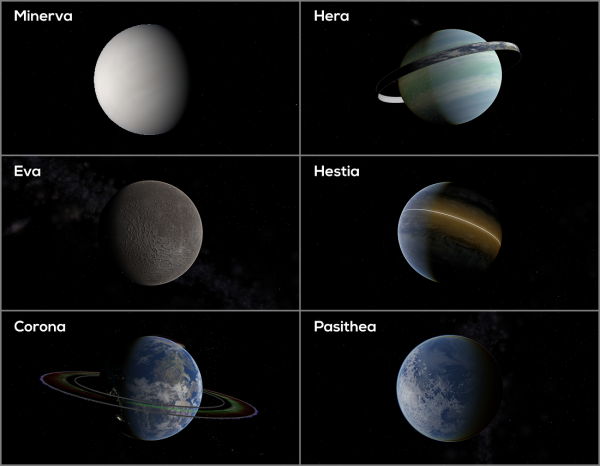 Image from The Astronomer | |
| The main worlds of the Iota system | |
Lucida System - Data Panel | |
| Star | Lucida, Iota Piscium, HIP 116771 |
|---|---|
| Type | F7 V |
| Luminosity | 3.55 x Sol |
| Constellation | Pisces |
| Distance from Sol | 44.7 ly (epoch 2000) |
The system's many polities have a history of becoming major players in interstellar politics. The most notable of these is Corona, once the capital of the Taurus Nexus, a superpower of its time, although most other major polities in the system have also influenced other nearby star systems at some point, especially after the system became the center and the symbolic capital of the Iota Network.
Minerva
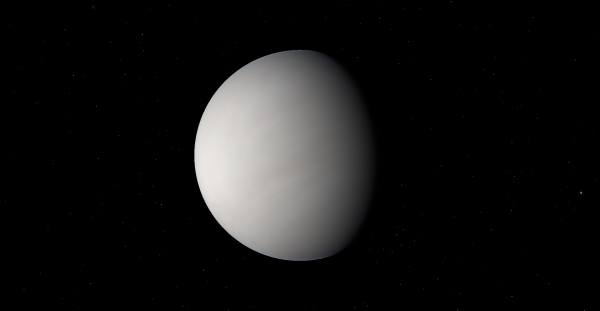 Image from The Astronomer | |
| Minerva, a Cytherean type world in the Iota Piscium system | |
| Minerva | Type - Cytherean. Radius 8150.7km Semi-major axis 0.612 AU Orbital Period 0.446 standard years Rotation period 176.093 standard hours Moons: none. Associated Polities: L4: Lucida-Minerva L4 computronium Node — L5: Lucida-Minerva L5 Computronium Node Polities: - Communion of Minerva |
|---|
Originally Minerva was part of the budding Hera Federation, but broke away during the Ex-MPA territory rush period. As gengineering technology evolved, the colonists soon opted for floater tweak bodies, allowing them to live outside floating habitats. Over thousands of years since then, the Minervan society evolved into a remarkably static empathic tribemind-based society that interacted very little with its off-world neighbors- a status that they maintained for over seven millennia, interrupted only by the brief occupation by the Solar Dominion, when they were forced out of isolation.
Today, the people of Minerva are much less strict about their isolationist policies. Many Minervans chose to join the wider Iotan community, and some even migrated away from their homeworld completely. Those who remain continue to pursue collective well-being in their own traditional, spiritual way. Many Iotans think that Minervan culture is constrained and even boring, but most of the 521 million people who populate this world have chosen to reject the high-pressure, materialistic culture that they see as plaguing the rest of the system.
Eva
 Image from The Astronomer | |
| Eva has numerous arcologies on its surface, which support most of the population of this world | |
| Eva | Type - Selenian. Radius 5179.2km Semi-major axis 1.241 AU Orbital Period 1.289 standard years Rotation period 34.363 standard hours |
|---|
Throughout early history, it monopolized amat production in the system and was on-par economically and militarily with Hera, the strongest polity at the time. This monopoly collapsed with the creation of monopoles, bringing along with it a good chunk of the planet's economy. The planet was a minor member of the Taurus Nexus. It never officially joined the NoCoZo, remaining de jure independent throughout the era. It was then annexed by the Solar Dominion along with the rest of the system and finally joined the Iota Network.
Historically, Eva has been one of the most expansionist polities in its system. This mentality never faded away and currently takes the form of a campaign to export its cultures. It has been rather successful, and the unique optimistic Evan culture became popular among many polities throughout the Iota system and beyond.
Corona
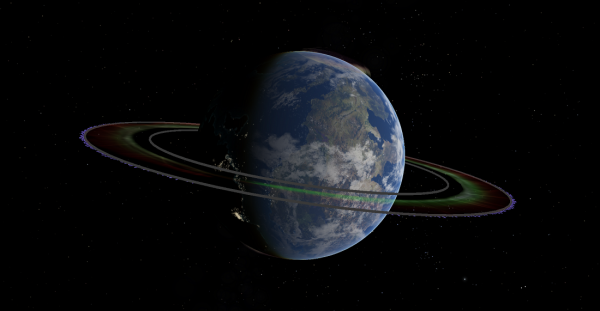 Image from The Astronomer | |
| Corona in the Current Era, with its artificial rings and auroral display | |
| Corona | Type - Terraformed Gaian world: see also main article about this world. Radius 7637km Mass 1.67 x Earth Semi-major axis 1.816 AU Orbital Period 2.282 standard years Rotation period 19.38 standard hours Moon Sonata- radius 1017.6km, period 11.729 standard days L4: New Eureka L5: Kayal Swarm Polities: - Planetary State of Corona |
|---|
Associated Polities
New Eureka
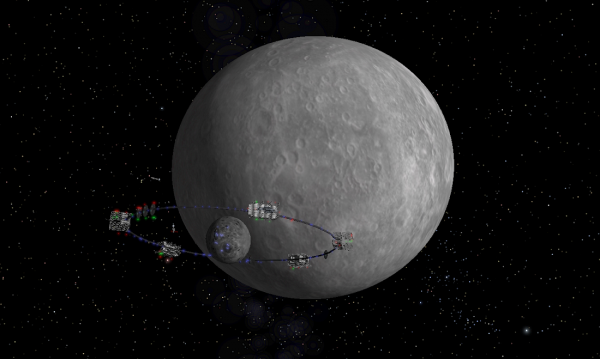 Image from Steve Bowers and The Astronomer | |
| New Eureka and Archimedes Shipyard | |
| New Eureka | Type - Dwarf Planet (Planetoid Class), located at the Corona/Iota Piscium L4 point. Radius 871.3km Semi-major axis 1.816 AU Orbital Period 2.282 standard years (in 1:1 resonance with Corona) Rotation period 6.548 standard hours Moon Archimedes- Radius 9.624 km |
|---|
Hera
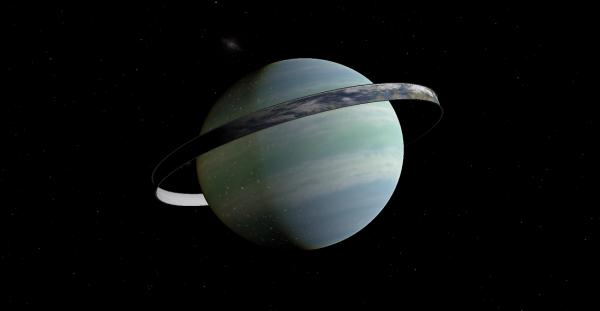 Image from The Astronomer | |
| Hera, with the supraplanetary ring that surrounds this gas giant | |
| Hera | Type - Gas Giant. Radius 61771.3km Semi-major axis 7.212 AU Orbital Period 18.057 standard years Rotation period 9.71 standard hours Moons Enyo (184 km), Enyalios (204 km), Erinyes (1044.1 km), Hebe (1234.7 km), Eileithyia (1514.6 km), Heracles (1389.3 km), Typhon (214 km) L4: At the Hera/Lucida L4 point is a swarm of asteroid habitats named after Soviet Cosmonauts (Kunhan) — L5: At the Hera/Lucida L4 point is a swarm of asteroid habitats named after American Astronauts (Yugar) Polities: - Federation of Hera — Council of Independent Kunhan Nations - Assembly of Yugar |
|---|
Hestia
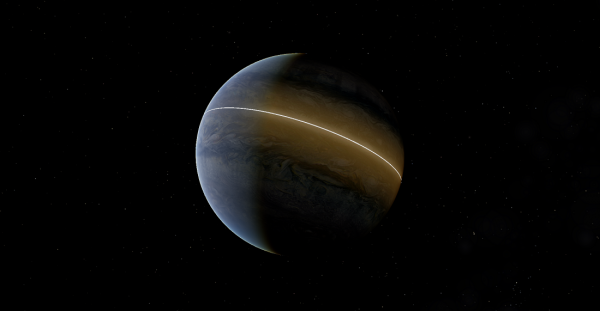 Image from The Astronomer | |
| The Class 3 Sunline around Hestia, which provides light and heat to a large number of local moons and habitats. | |
| Hestia | Type - Jovian world, equipped with a class 3 sunline to illuminate the local moons. Radius 27810.4 km Semi-major axis 14.786 AU Orbital Period 53.017 standard years Rotation period 13.72 standard hours Moons Oikos (partially paraterraformed moon)(488.7 km); Prytania (partially paraterraformed moon)(420.2 km); Delphi (2467.8 km) L4: Ginkgo Swarm — L5: Kandan Swarm Polities: - Federation of Hestia |
|---|
Nadir
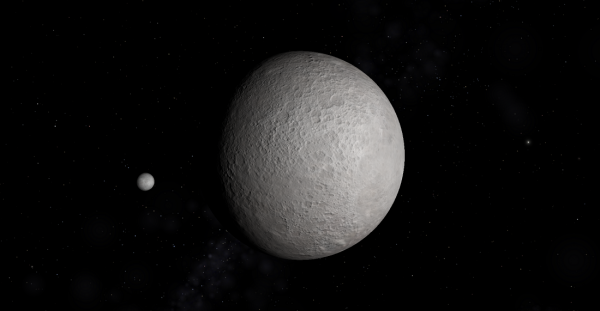 Image from The Astronomer | |
| Nadir, a small icy world in this system, and its moon Zenith | |
| Nadir | Type - LithicGelidian Type world. Radius 1364.3 km Semi-major axis 19.376 AU Orbital Period 79.533 standard years Moon Zenith (652.9 km) |
|---|
Pasithea
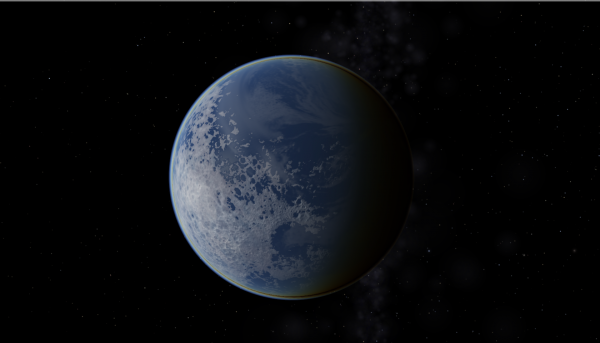 Image from The Astronomer | |
| Pasithea is a cold lithicgelidian world at the edge of the system. | |
| Pasithea | Type LithicGelidian. Radius 2658.4 km Semi-major axis 28.859 AU Orbital Period 144.568 standard years Rotation period 17.33 standard hours Moon Hypnos - radius 126.8 km Polities: - Democracy of Pasithea |
|---|
Cahaya
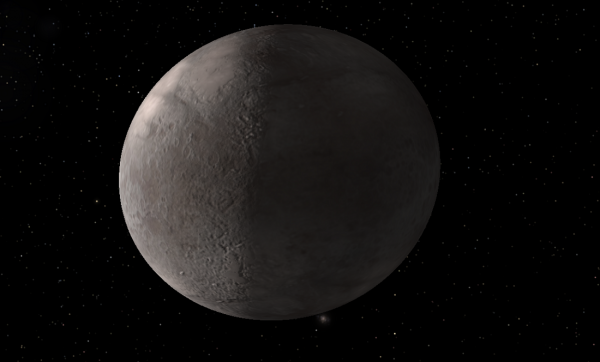 Image from The Astronomer and Steve Bowers | |
| Cahaya, a small, oblate dwarf planet on the outskirts of this system | |
| Cahaya | Type LithicGelidian. Radius 1472.1 km Semi-major axis 49.014 AU Orbital Period 319.986 standard years Rotation period 7.543 standard hours |
|---|
The Corona Cliotelescope
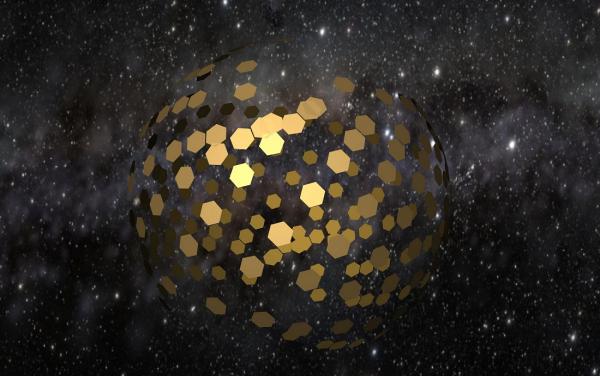 Image from Steve Bowers |
Wormholes
Colors of the Universe (2,500 m) to 54 Piscium (Relay 9)A Short Walk (1,600 m) to TRAPPIST-1 (Resonance)
Related Articles
Appears in Topics
Development Notes
Text by Steve Bowers and The Astronomer
Initially published on 26 February 2019.
Initially published on 26 February 2019.
Additional Information
Celestia add-on for this system.
First download Celestia, then unzip this folder into the extras folder in Celestia. The Iota Piscium system can be found by searching using the 'select object' function.
Download Link
First download Celestia, then unzip this folder into the extras folder in Celestia. The Iota Piscium system can be found by searching using the 'select object' function.
Download Link






